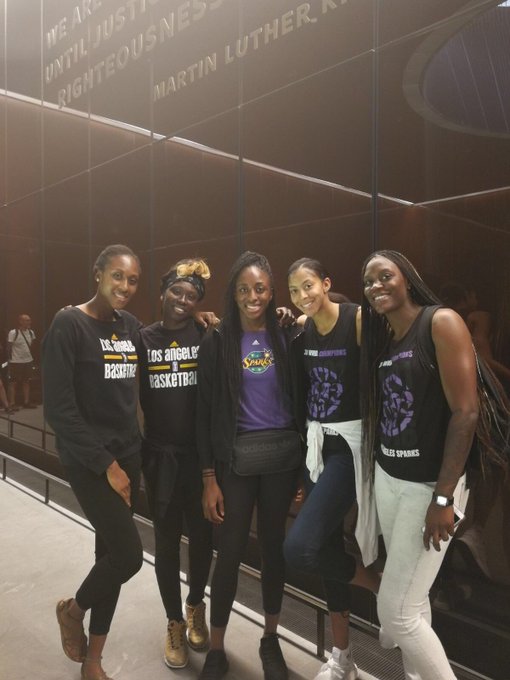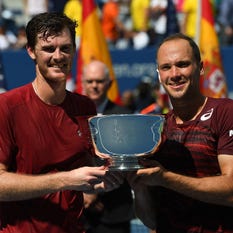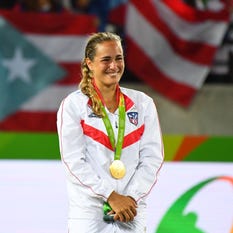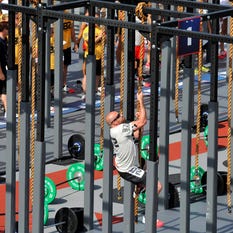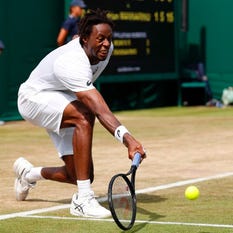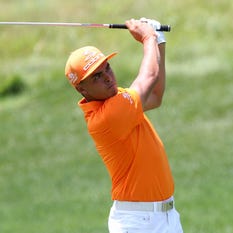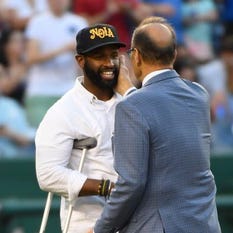
The Los Angeles Sparks took a guided tour of the National Museum of African American History and Culture in Washington D.C. Michael Owens
WASHINGTON — Twenty-six hours ahead of their game against the Washington Mystics, the Los Angeles Sparks gathered as a team to watch film.
The defending WNBA champs, dressed in purple, yellow and black T-shirts, slid across wooden benches and looked up at the screen as black-and-white images flickered across.
“I don’t mind suffering myself,” a voice on screen declared. “And I will suffer some more just for my freedom. I want equal rights.”
This wasn’t game film. The Sparks were watching a short documentary about the role women played in the Civil Rights movement as part of their tour of the National Museum of African American History and Culture. Players, coaches and team officials made the trip together Tuesday while in town for Wednesday’s game.
But the struggle for African Americans is not purely historical, as the team visited three days after a white nationalist rally turned deadly in Charlottesville, Va.
“It’s more a perspective of what do I say to my daughter? ’Cause she knows love. That’s what I’m teaching her. I just hope everybody is teaching their kids that,” Candace Parker, the 2016 Finals MVP, told USA TODAY Sports.
“To know something is to learn about it, and I think that if everybody spent more time learning about each other and having that conversation, more would be accomplished and there would be less hate, but I’m sad that it’s still happening.”
Inside the halls of the Smithsonian museum, players learned more about African-American history, through exhibits about slavery to more contemporary displays of sports and music.
“This is something that’s very special. I think everybody is touched in different ways by this,” Parker said. “Obviously being African American, knowing where you came from and how instrumental African Americans have been to the building of this country, I’m really excited to come back.”
More than 60% of the museum lies underground. Visitors start their tour by descending three stories, then work their way up chronologically, starting with Middle Passage, moving through Civil War and Civil Rights, and finally coming to Modern Day.
“We go from slavery all the way in the bottom of the building, the most depressing, most difficult, up to our opportunities, light and culture as you head upstairs,” said John W. Franklin, senior manager for the office of external affairs at the Smithsonian, who led the Sparks on their tour.
Initially chatty upon arrival, the team’s volume level seemed to mimic that purposeful design.
A hush fell over the players as they passed through a hall in the building’s underbelly with artifacts from slave ships, the sounds of crashing waves filling the gaps. By the time they reached the Emmett Till memorial, they were silent. Some covered their mouths as they stood near a coffin that once held the body of Till, a 14-year-old boy who was lynched in 1955 and whose death has been recognized as a catalyst for the Civil Rights movement. Tucked in a corner where no photography is allowed, they listened to the voice of his mother, Mamie Till, cutting over looping chords of Amazing Grace.
But as the players ascended the ramps, back toward where the window lit above-ground floors, their voices began to rise.
“We’re a pretty talkative group. We are very outgoing,” rookie guard Sydney Wiese said. “And throughout the tours, there was silence. Everyone was so focused and sort of asking questions to each other, but really taking it in as a group and as individuals.”
After more solemn moments looking over exhibits downstairs, the Sparks were back to their usual volume by the time they reached the top floor a few hours later, singing, joking and posting on Instagram.
“Candace, look, you made it!” teammates teased as Parker turned to see a picture of a young girl jump roping.
“See, I was trying to bring you culture before the game,” Parker joked.
In the music gallery, nine-year veteran Essence Carson mixed Ain’t No Mountain High Enough on a digital turntable as teammates danced along.
Parker and Nneka Ogwumike would go for a more modern vibe, channeling Beyoncé’s recent lyrics, singing back and forth, “All of this winning, all of this winning.”
Winning is familiar for the Sparks, who are second in the Western Conference and have clinched a playoff berth with six games remaining. They captured last season’s title, the team’s third overall, in a thrilling five-game series against the defending champions, the Minnesota Lynx, with Ogwumike’s game-winning jumper sealing the deal.
“We had a special team, a special season, start to finish, especially with how competitive and historic the championship series was,” coach Brian Agler said.
“I think it made a big impression on a lot of people that follow basketball but may not have followed women’s basketball so closely. I think it was eye-opening.”
The Sparks have made an imprint on sports history. General manager Penny Toler, who toured with the team Tuesday, scored the first points in WNBA history when she debuted for the Sparks in 1997. A photograph in the sports gallery showcases Lisa Leslie, who was the first woman to dunk in the league. Parker was the second.
“Being in the longest-standing women’s sports league in America, it speaks volumes to where women’s sports are going and what women are capable of,” said Parker, standing down the hall from lifesize statues of Venus and Serena Williams.
Damion Thomas, curator of the “Sports: Leveling the Playing Field” gallery, has amassed quite a collection, including nine of Carl Lewis’ Olympic medals, Michael Jordan’s 1996 NBA Finals jersey and Gabby Douglas’ wrist tape and grips from the 2012 Olympics. But for Thomas, sports history is about more than just prolific achievements.
“Our sports gallery just doesn’t highlight the best athletes, but it speaks about the role of sports in the larger African-American struggle for greater rights and freedom,” he said in a phone interview Monday.
“So we hope these athletes see themselves as part of a continuum, benefiting from the activism of prior athletes but also seeing that they potentially have a role to play in using sports as a way to challenge social inequality.”
For a team that uses the hashtag #SparkTheCommunity on social media, that takeaway was clear.
“You learn a lot about things we haven’t ever had to deal with and won’t ever have to deal with, and being able to balance with what we experience now,” said Ogwumike, the 2016 league MVP and president of the players union.
“Athletes that came before us that really sparked change — I connect to it in a way that lets me know I need to uphold that and I need to be able to leave the world a better place than when I came in.”
Since opening in September, the popular National Museum of African American History and Culture has welcomed more than 2.3 million visitors.
Sports teams and athletes have made a point to visit. Jordan, LeBron James and Magic Johnson each donated more than $1 million, and many other athletes have donated items.
The Sparks, presenting a ball signed by the team, were the second WNBA team to organize an official tour, as the hometown Mystics made a trip this summer.
Juggling practice schedules and travel time, the Sparks were able to spend about 2 1/2 hours, though some were making plans to return with family members.
Even as time was running out on the tour, Ogwumike, the daughter of Nigerian immigrants, spent several minutes discussing a map about contemporary migration with Parker.
“A lot of the slaves came from Nigeria, which is where my family is from. And so we had to deal with a lot of issues — my dad and my ancestors,” Ogwumike said. “You pass stories down by word of mouth, and so you deal with residual effects of people coming in and invading a place that you found peaceful and was working for you.”
While the museum does not downplay the oppression that African Americans have endured or the challenges that exist today, the Sparks exited their tour with an invigorated sense of pride and purpose.
“It’s a blessing. It’s not often that we all get together as a team outside of any type of practice or game. So for us to be able to do something educational and memorable is really important,” Ogwumike said. “I’d do it again.”

